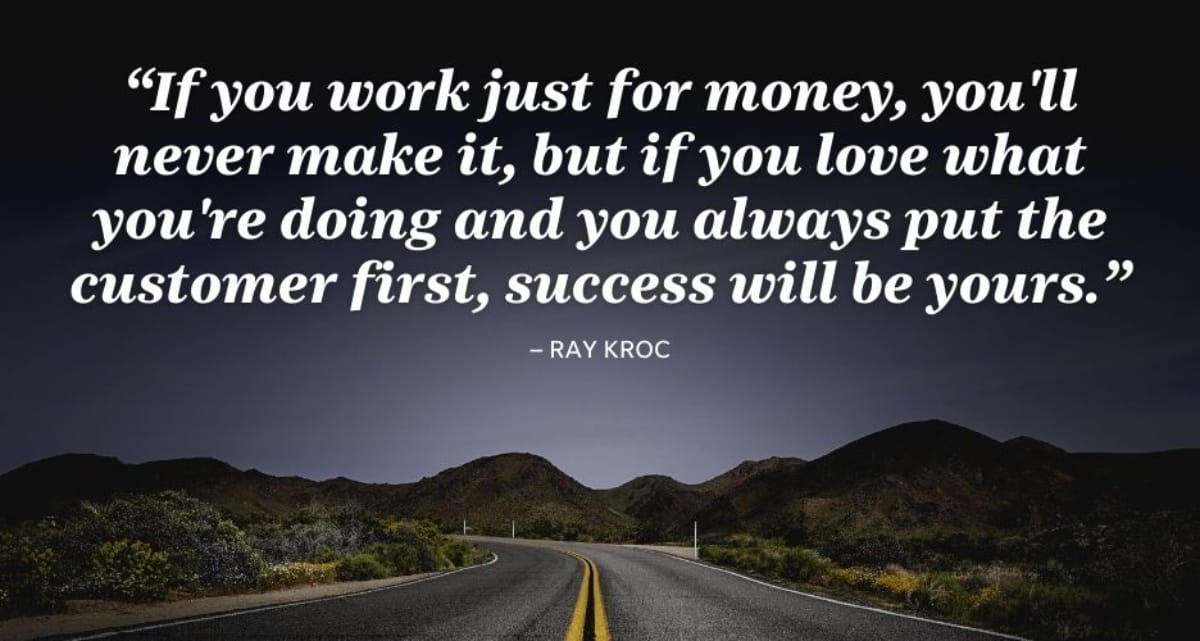3 Ways [Gratitude] Can Transform Your Business
![Cosmico - 3 Ways [Gratitude] Can Transform Your Business](/content/images/size/w1200/2024/02/gratitude_transform_workplace_2024_success_cosmico_business_tech_insights.jpg)
When competition is fierce and the quest for success is relentless, the power of gratitude often goes unnoticed. Yet, this simple, profound virtue can be the catalyst for transformative change within any organization. Gratitude, at its core, is about recognizing and appreciating the value in others and the benefits we receive from them. When applied in a business context, it transcends traditional management practices, creating an environment where respect, appreciation, and genuine acknowledgment flourish.
Integrating gratitude into business operations can significantly enhance the workplace atmosphere, leading to improved employee morale, increased productivity, and a stronger, more loyal customer base. This article goes into three primary ways gratitude can revolutionize a business: by boosting employee morale and productivity, strengthening customer relationships, and building a positive brand image and reputation.
Understanding and implementing gratitude in business is not merely about saying "thank you" to employees and customers. It's about creating a culture that values and recognizes every individual's contribution, encouraging a cycle of positive feedback and appreciation that benefits everyone involved. From the boardroom to the front lines, when gratitude becomes a core component of a company's DNA, it has the power to transform not just the organizational culture but also its bottom line.
As we explore these transformative powers of gratitude, we invite you to reflect on the role gratitude currently plays in your business and how its deliberate application can lead to significant, positive changes. The following sections will provide insights, practical strategies, and real-life examples of businesses that have harnessed the power of gratitude to achieve remarkable success and fulfillment.
Way 1: Enhancing Employee Morale and Productivity

The Psychology Behind Gratitude and Work Satisfaction
The relationship between gratitude and work satisfaction is deeply rooted in human psychology. Feeling appreciated is a fundamental human need, and in the workplace, it translates into higher motivation, job satisfaction, and loyalty. Studies in organizational psychology have consistently shown that when employees feel valued and recognized for their efforts, they are more likely to exceed performance expectations and contribute to a positive work environment.
Gratitude activates a sense of belonging and purpose among employees, making them feel part of something bigger than themselves. This emotional connection not only boosts morale but also encourages a collaborative and supportive culture. Furthermore, gratitude reduces negative workplace behaviors, such as envy and competition, by fostering an atmosphere of mutual respect and appreciation.
Practical Strategies for Cultivating a Culture of Gratitude
Building a culture of gratitude requires intentional action and consistency. Here are some practical strategies that businesses can employ:
- Regular Appreciation Meetings: Dedicate time during team meetings to acknowledge individual and group achievements. This practice not only highlights accomplishments but also encourages others to strive for excellence.
- Personalized Thank-You Notes: Taking the time to write personalized notes to employees can have a lasting impact. These notes should be specific, acknowledging the individual's contribution and its significance to the team or project.
- Recognition Programs: Implement programs that regularly recognize and reward employees for their hard work and achievements. These can range from "Employee of the Month" awards to performance bonuses or extra days off.

Incorporating these strategies into the daily operations of a business can significantly enhance the workplace environment, making employees feel valued and appreciated.
Case Studies and Success Stories
Google and Zappos are prime examples of companies that have successfully integrated gratitude into their corporate culture. Google's recognition programs, such as its peer-to-peer bonus system, allow employees to reward their colleagues for outstanding work, fostering a sense of appreciation and community. Zappos, known for its exceptional culture, encourages employees to send thank-you cards to co-workers, and its "Employee of the Month" is chosen based on peer nominations, emphasizing the value of gratitude and recognition from fellow employees.
These companies have demonstrated that a culture of gratitude not only enhances employee morale and productivity but also contributes to overall business success. Their success stories serve as a powerful testament to the transformative power of gratitude in the workplace.
Way 2: Strengthening Customer Relationships

The Role of Gratitude in Customer Service and Experience
Gratitude plays a pivotal role in shaping customer service and the overall experience a business provides. When customers feel genuinely appreciated, their loyalty and satisfaction with the service increase, leading to stronger relationships between the business and its clientele. This genuine expression of thanks goes beyond transactional interactions; it creates an emotional connection, making customers feel valued and respected.
The impact of gratitude on customer experience is profound. It can transform a single purchase into a lasting relationship, encouraging repeat business and positive word of mouth. In an era where consumers have endless choices, businesses that stand out are those that go the extra mile to express gratitude and show appreciation for their customers.

Innovative Ways to Show Appreciation to Customers
There are numerous creative methods businesses can employ to show gratitude to their customers. These include:
- Personalized Thank-You Messages: Sending personalized messages or emails to thank customers for their purchase or for choosing your service can make a big difference. This personal touch shows that you value them not just as customers but as individuals.
- Loyalty Programs: Implementing loyalty programs that reward repeat customers for their business is a powerful way to express gratitude. These rewards can range from discounts to exclusive access to new products or services.
- Surprise and Delight Tactics: Occasionally surprising customers with unexpected gifts, upgrades, or services can significantly enhance their perception of your business. These gestures of appreciation create memorable experiences that customers are likely to share with others.
By integrating these strategies, businesses can cultivate a culture of gratitude that resonates with customers, fostering loyalty and enhancing the overall customer experience.
Analyzing the Impact: Feedback and Metrics
To gauge the effectiveness of gratitude strategies in strengthening customer relationships, businesses must analyze customer feedback and engagement metrics. Tools such as customer satisfaction surveys, Net Promoter Scores (NPS), and social media engagement rates can provide valuable insights into how customers perceive and respond to your gratitude initiatives.
Feedback from customers can offer direct insights into the aspects of your gratitude practices that are most appreciated and those that may need adjustment. Metrics such as repeat purchase rates and customer lifetime value can also indicate the long-term impact of expressing gratitude on customer loyalty and business growth.
Way 3: Building a Positive Brand Image and Reputation

Gratitude as a Brand Value
Incorporating gratitude into a brand’s core values can profoundly influence its public image and reputation. A brand that is known for being genuinely appreciative of its employees, customers, and community stands out in a crowded marketplace. This perception of gratitude can attract customers who value empathy and authenticity, leading to a loyal customer base that is more likely to advocate for the brand.
Moreover, integrating gratitude into brand messaging and communications can help to humanize a business, making it more relatable and trustworthy to its audience. When customers see a brand actively expressing gratitude and giving back to the community, it enhances their perception of the brand and encourages positive engagement.
Public Relations and Community Engagement Through Gratitude
Public relations and community engagement initiatives that reflect a company's gratitude can significantly boost its brand image. Activities such as charity events, community service projects, and partnerships with non-profit organizations demonstrate a brand’s commitment to giving back and appreciating the broader community.
Such initiatives not only contribute to a positive social impact but also enhance brand visibility and reputation. By aligning brand actions with values of gratitude and generosity, businesses can build stronger connections with their communities and stakeholders, fostering goodwill and positive public perception.
Final Thoughts
The transformative power of gratitude in business extends across all facets of an organization, from enhancing employee morale and productivity to strengthening customer relationships and building a positive brand image. By adopting gratitude as a core business strategy, companies can create a more engaging, fulfilling, and respectful work environment that benefits everyone involved.
As we've explored, the strategies and examples provided demonstrate that gratitude is not just a moral virtue but a practical business tool that can lead to significant improvements in performance, loyalty, and reputation. Businesses that recognize and implement gratitude in their operations are well-positioned to thrive in today's competitive market.
In conclusion, the journey towards incorporating gratitude into a business is ongoing and evolves with each interaction. By continually seeking ways to express appreciation and value to employees, customers, and the community, businesses can foster a culture of gratitude that transcends the ordinary, making a lasting impact on their success and the well-being of all stakeholders involved.
Key Takeaways
| Aspect of Business | Key Takeaways |
|---|---|
| 1. Employee Morale & Productivity | - Gratitude increases job satisfaction, motivation, and loyalty. - Implement regular appreciation meetings, personalized thank-you notes, and recognition programs. - Case studies: Google and Zappos highlight the success of gratitude in enhancing workplace culture. |
| 2. Customer Relationships | - Genuine appreciation enhances customer loyalty and satisfaction. - Employ personalized messages, loyalty programs, and surprise gifts to show customer appreciation. - Analyze feedback and metrics to gauge the impact of gratitude on customer relationships. |
| 3. Brand Image & Reputation | - Gratitude should be a core brand value to attract positive attention and loyalty. - Engage in community service and public relations initiatives that reflect the company’s gratitude. - Positive brand actions aligned with gratitude enhance public perception. |
| Overall Business Transformation | - Gratitude fosters a respectful, engaging, and fulfilling work environment. - It’s a strategic tool for improving performance, loyalty, and reputation. - Continuous gratitude practices benefit employees, customers, and the broader community, leading to business success. |
Top Books on Gratitude
- "The Carrot Principle: How the Best Managers Use Recognition to Engage Their People, Retain Talent, and Accelerate Performance" by Adrian Gostick and Chester Elton - This book provides evidence from one of the most comprehensive management studies ever undertaken, revealing that the key trait of successful managers is their ability to provide frequent and effective recognition to their employees.
- "1501 Ways to Reward Employees" by Bob Nelson - Updated to meet the evolving workplace's needs, this book offers a vast array of creative, low-and no-cost rewards, drawing from thousands of companies worldwide to help creatively engage with employees, freelancers, and virtual teams.
- "Make Their Day!: Employee Recognition That Works" by Cindy Ventrice - Ventrice explores why many recognition programs fail to make employees feel recognized despite significant investments. She offers insights into what truly makes employees feel appreciated, providing strategies for genuine, impactful recognition.
- "The Power of Thanks: How Social Recognition Empowers Employees and Creates a Best Place to Work" by Eric Mosley and Derek Irvine - This book highlights how leading companies empower employees through social recognition, fostering a culture of mutual appreciation that enhances morale, efficiency, and profitability.
- "The 5 Languages of Appreciation in the Workplace" by Gary Chapman and Paul White - Applying the concept of love languages to the workplace, this book guides on effectively communicating appreciation and encouragement to employees, thereby increasing job satisfaction and reducing burnout.





